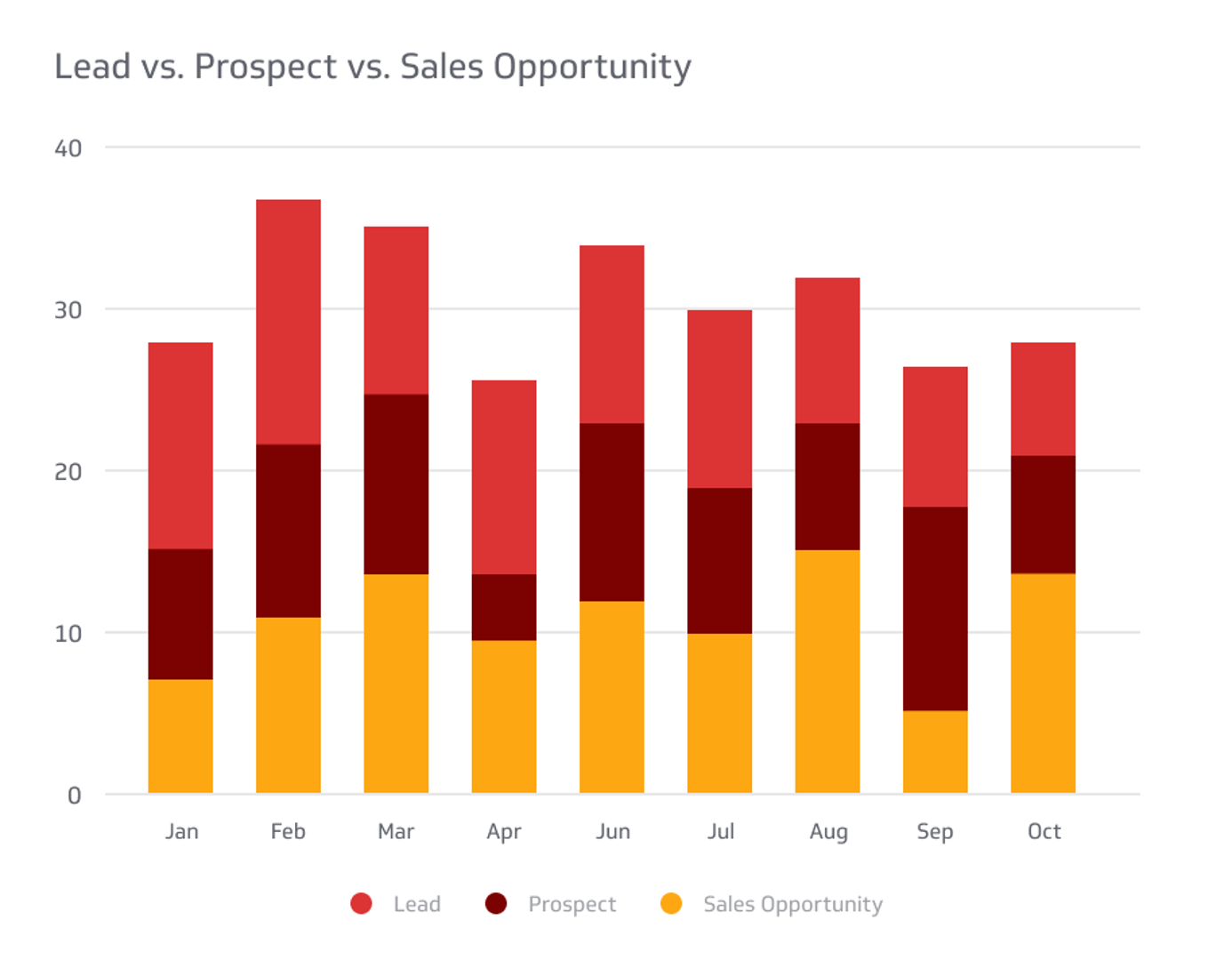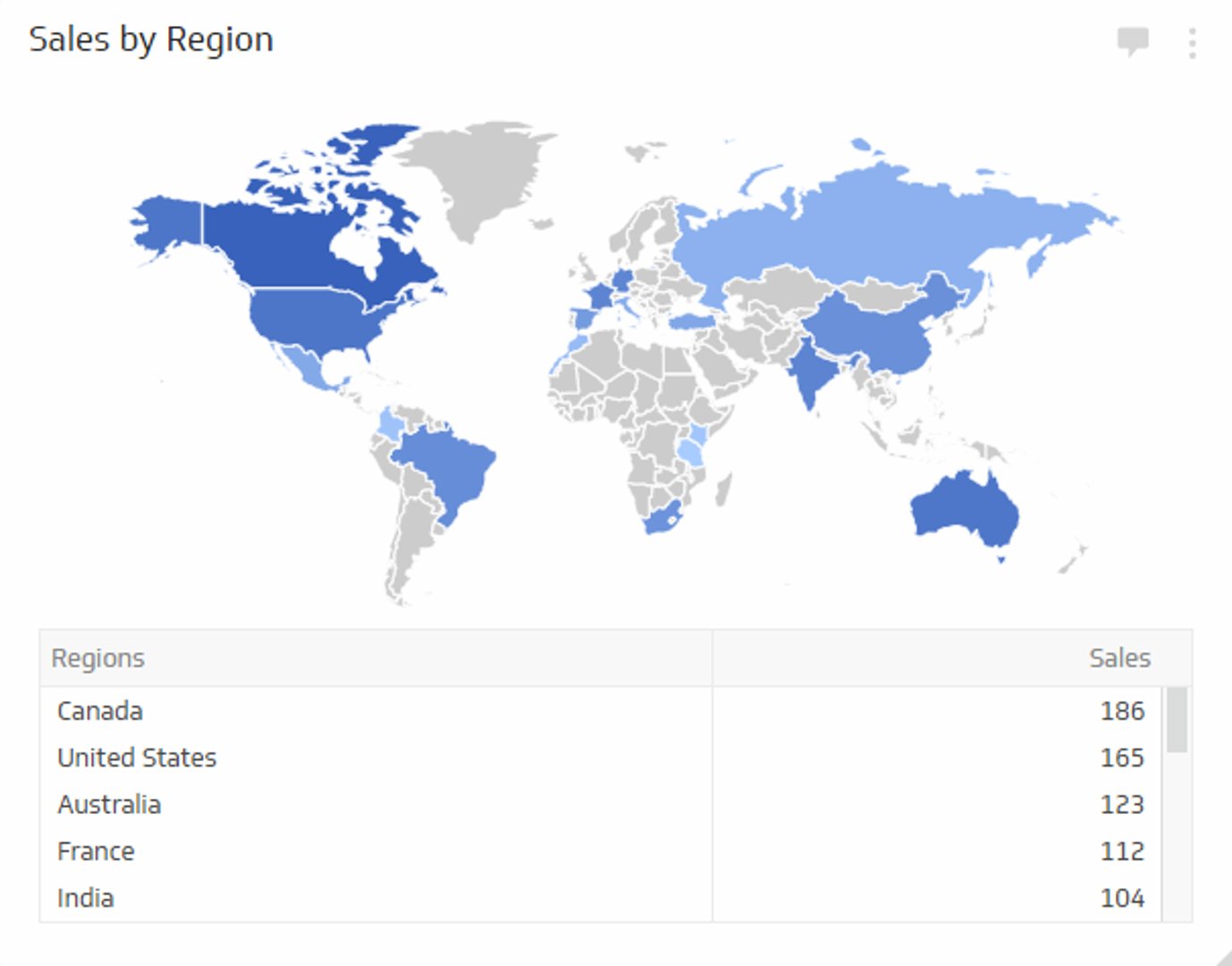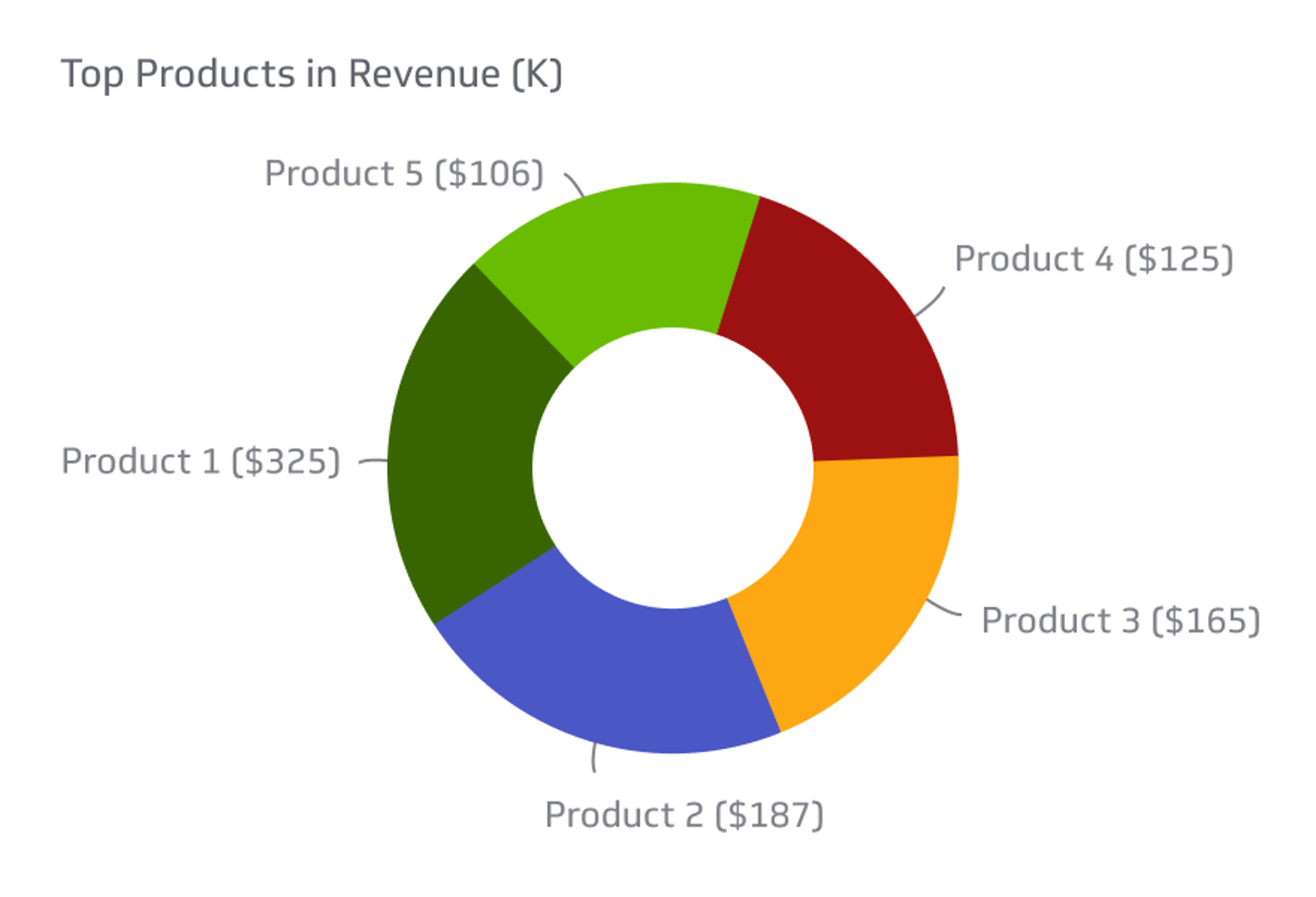Lead vs. Prospect vs. Sales Opportunity
These three terms refer to users at different stages of the sales funnel or buying journey.
Track all your Sales KPIs in one place
Sign up for free and start making decisions for your business with confidence.

Leads, prospects, and sales opportunities are three terms you’ll hear marketing and sales teams use. These terms refer to potential customers or clients, but there are some important nuances.
Let’s take a closer look at the differences between lead vs prospect vs sale opportunity, how to tailor your approach to each category, and what it takes for users to jump from one category to another.
Definitions: Lead vs. Prospect vs. Sales Opportunity
These three terms refer to users at different stages of the sales funnel or buying journey.
Leads
Leads are at the top of the sales funnel in the awareness stage. These users are typically researching a pain point and want to identify possible solutions.
You can connect with these leads by answering their questions through your content marketing strategy. Coming across your content will generate awareness for your brand, and finding helpful answers will result in a positive first impression.
The intent of a lead is largely unknown. The user might be conducting research for a future purchase, but there are many other reasons for consuming content.
Prospect
A prospect is a person who is in the consideration stage of the sales funnel. They are performing buying tasks such as seeking information about products and comparing them against the requirements they have for the purchase.
They might also compare prices, check online reviews, and actively expand their knowledge to gain the expertise needed to compare different solutions.
These behaviors indicate the prospect is considering a purchase, but it’s still unclear if your products or services are a good match.
Marketing and sales teams can use qualifying strategies to identify the leads that are likely to become prospects. Once they identify a prospect, the focus should be on nurturing this prospect to support buying tasks and strengthen their connection to the brand.
Sales Opportunity
A sales opportunity is a prospect that has demonstrated strong engagement and a strong likelihood of making a purchase.
It has completed advanced buying tasks with success, and your product or service is a good match for its requirements. Plus, this user is in a position to make a buying decision and has the necessary budget for the purchase.
Again, marketing and sales teams should implement qualifying strategies to spot prospects who have the characteristics of a sales opportunity.
Why Do Leads, Prospects, and Sales Opportunities Matter?
These three groups have a shared interest in your brand and products, but it’s important to keep in mind that they’re going through vastly different stages of the buying journey.
Providing an Adequate User Experience
For 89% of businesses, providing assistive experiences along the customer’s journey is key to achieving growth.
This statistic illustrates the importance of user experience. It doesn’t take much for a user to consider a competitor, and a single negative experience can be enough to change how a lead or prospect perceives your brand.
Identifying leads, prospects, and sales opportunities allows you to tailor the experience you offer and ensure that you meet users’ changing needs throughout the buying journey.
Once you have a clear picture of which users belong to each category, you can implement a segmentation strategy and deliver content that is unique to each group.
At the top of the sales funnel, leads will typically expect straightforward answers to their questions in a language that is accessible. Bite-sized content is ideal, and leads will quickly perceive sales messages as pushy.
As a user progresses along the sales funnel, they will need more sophisticated content. They will also want to consume content across different channels, interact with the sales team, and learn from long-form content that matches complex buying tasks.
Users have precise expectations when interacting with digital content. It’s a growing challenge for brands since users are unforgiving to marketers who don’t meet these expectations.
If your content doesn’t meet the expectations of users in a specific stage of the buying journey, users will likely click out of your site. They will come away with the memory of a frustrating or disappointing experience.
It can prevent them from progressing along the sales funnel, and result in a negative image that will cause them to overlook your brand for current and future purchases.
Optimizing Marketing ROI
Operating in a digital-first environment means the user journey increasingly relies on content users can consume by themselves.
For marketers, it’s more important than ever to adopt a sound content marketing strategy and invest in creating and publishing high-quality content.
Since content represents a significant portion of the average business’ marketing budget, marketers need to measure content ROI and look for ways to optimize it.
Differentiating between leads, prospects, and sales opportunities is an effective strategy to make the most out of your content marketing efforts. It will also support your efforts to track content performance and turn data into actionable insights.
You can optimize content marketing ROI by:
- Identifying the buying activity each piece of content supports.
- Matching each piece of content to the category of users who would find it helpful and valuable based on their current sales funnel stage.
- Optimizing content so it shows up for search users in the correct category.
- Adapting content formats to match the preferences of users in each category.
- Linking to internal resources that correspond to the level of sophistication of the reader.
- Using more or less technical terms and concepts based on how much expertise the user has with the topic.
- Providing a clear next step that makes sense based on whether the user is likely to be a lead, prospect, or sales opportunity.
Lead vs. Prospect vs. Sales Opportunity: Implementing the Right Strategies
With the right strategies in place, marketing and sales teams can consistently establish strong connections with users at different stages of the sales funnel while qualifying users who are likely to move on to the next stage.
Connecting With Leads
Did you know that 70% of brand decisions happen at the start of the buying journey in the B2C space? Delivering a positive initial experience is crucial for your bottom line.
From Awareness to Consideration
When interacting with leads, your priority should be to fulfill the users’ needs by answering their questions through content that is compelling and easy to consume.
Once users have entered the awareness stage by finding out about your brand, you can briefly present your products and unique selling points to nudge them toward the consideration stage.
The key is to stay away from messaging that can come across as pushy. Your goal is to deliver a memorable experience and create opportunities for further touchpoints.
Staying In Touch
In the past, retargeting users via third-party cookies was a common practice.
However, with all major web browsers phasing out these cookies, your best bet is to focus on engaging and valuable content that will make users want to follow you on social media or sign up for your newsletter.
You should also publish content on multiple channels to increase your chances of showing up as a user performs additional searches on a topic.
Qualifying and Nurturing Prospects
These strategies will help you recognize prospects and connect with them through nurturing.
Qualifying Prospects
A qualified prospect is a user who meets certain criteria that indicate there is a chance they will make a purchase. Every brand has its threshold for assessing the likelihood of a purchase.
Not all leads will become prospects because many will not meet these criteria. The best way to establish criteria that work for your brand is to use data to create buyer personas.
Look for traits your customers share. Leads who also have these traits could be good candidates for becoming prospects.
For consumers, you can look at demographics, income level, family status, and location. If you’re selling to businesses, you should consider their industry, company size, growth stage, and location.
Next, you’ll have to figure out if your goods or services are a good match for the requirements of the potential prospect. A solution that is over budget or doesn’t meet their requirements won’t work. Failing to align with a consumer’s values can also be a deal breaker.
Another key factor is to verify that the user is in a position to make a buying decision. Businesses often have exploratory committees in charge of researching solutions, but the ultimate decision is up to a team of executives.
In the B2C space, women drive up to 80% of purchase decisions, and other household members might not be in a position to pick a product or service.
Nurturing Prospects
Qualifying prospects allows you to focus on users with a high probability of making a purchase. It results in a higher ROI for your marketing efforts. It’s also easier to deliver a personalized experience when working with a smaller group of users.
Prospects are in the decision stage of the sales funnel. They’re performing complex buying tasks, like exploring different solutions, building a list of requirements, and comparing suppliers.
This process is increasingly independent of marketers as buyers seek information from third-party sources. However, there are plenty of opportunities to connect and nurture prospects through a strong content marketing strategy:
Email series is a powerful tool for helping prospects become more familiar with a topic and increase their sophistication.
You can publish content via third-party platforms, including thought leadership pieces.
Consider partnering with blogs, podcasts, and YouTube channels to connect with prospects seeking third-party content.
Long-form content is a crucial element for supporting complex buying tasks.
Long-form content can include explainer videos, white papers, case studies, and webinars. These formats won't sustain the attention of leads in the awareness stage.
However, they’re ideal for helping prospects measure your product or service against their requirements and gain confidence in their ability to make a purchase decision.
Re-Engagement Strategies
The buying journey is different for everyone, but you can use analytics to get an idea of how long it usually lasts and how frequent the touchpoints are.
Once you map the typical user journey, you can identify users who have become inactive. These users are candidates for re-engagement strategies that remind them about your brand and recommend a clear next step to get them back on track.
It’s difficult to justify re-engaging leads since these users might never have had a buying intent in the first place, and reaching out can feel pushy.
However, you can justify the time and effort it takes to re-engage users at the prospect stage. Try sending a personalized email, inviting them to join your community on social media, or sharing a special offer with them.
Growing Your Bottom Line With Sales Opportunities
You can think of identifying sales opportunities as a second stage in the qualification process. You’ll need to develop stricter criteria to single out the prospects with a strong probability of making a purchase.
Developing Criteria With Internal Data
The best way to identify sales opportunities is to rely on internal data from past sales. You should go over this data and look for traits your current customers have in common.
You can also focus on customers who spend more or make repeat purchases. Once you know which traits are likely to indicate that a sales opportunity could become a customer with a high lifetime value, you can justify spending more time and resources to nurture this sales opportunity.
Using buyer personas makes sense at this stage, but you need to implement stricter criteria compared to qualifying prospects.
You can, for instance, define a sales opportunity as a prospect who has performed specific buying tasks, confirmed that the product or service is a good match for them, and proven that they have an existing budget for the purchase.
From Marketing to Sales
While digital marketing strategies remain the best way to engage and nurture leads and prospects, your sales team is your most effective resource when it comes to sales opportunities.
A pivoting moment in the sales funnel happens when a user is ready to interact with your sales team. It can be one of the traits you use to differentiate sales opportunities from prospects.
Interacting with a salesperson shows an intent to buy. It’s also an opportunity to gather more data than you could through content consumption.
Your salespeople can use strategies like asking about requirements, finding out what it would take for the user to make a buying decision, and which obstacles they need to overcome to make a purchase.
These interactions are also the foundation for a long-term relationship. As salespeople gather more information and record it in your CRM system, your organization is creating detailed profiles that will help you deliver a personalized experience after the purchase.
When nurturing sales opportunities, your main goal should be to get these users to schedule a call with the sales team or meet in person. You can also offer alternative channels like chat or email for users who have quick questions.
If you offer customized solutions, providing users with a form they can fill out to request a quote or proposal can become a powerful touchpoint.
You’ll gain valuable insight into the user's requirements and can tailor your response to highlight how your product or service can meet their unique needs.
Product demos are another popular strategy. They provide sales opportunities with concrete proof that the solution meets their requirements. Software developers are increasingly building buying features into the demos they deliver to streamline the buying experience.
Wrap-Up
Lead vs. prospect vs. sales opportunity is a crucial distinction since these three groups are at different stages of the sales funnel and have vastly different needs and expectations.
As a marketer or sales expert, you need to define what these categories mean for your organization and which criteria you want to use to qualify users into each group.
You can then adapt your marketing and sales strategies to nurture users and deliver an optimal experience at every stage of the buying journey.
Related Metrics & KPIs



